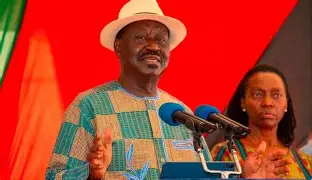
Israel’s two-year war in Gaza is nearing its end. US President Donald Trump on Wednesday announced that Prime Minister Benjamin Netanyahu and Hamas had agreed to the first phase of a plan involving the release of all hostages and the partial retreat of Israeli forces.
Aside from the humanitarian relief of ending what has been a ruinous conflict, it also means the cracks in Israel’s $580 billion economy shouldn’t get dangerously wider. But it’s premature to assert that Israeli growth will promptly revert to levels seen earlier this decade.
The war has killed more than 67,000 Palestinians, according to Gaza’s health ministry. Israel says Hamas killed 1,200 people during the October 7 attacks, while the subsequent conflict caused hundreds of extra fatalities among Israel’s military and hostages.
Economic activity in Gaza and the West Bank has collapsed. Yet while Israeli GDP slowed from high single-digit levels in 2021 and 2022 to 0.9 per cent in 2024, indicators of Israeli financial stress have been notably absent.
At 3.25 to the dollar, the shekel has appreciated nearly 20 per cent against the US currency since October 2023, aided by Bank of Israel stabilisation measures. The Tel Aviv Stock Exchange’s benchmark index is up nearly 300 per cent, compared to 56 per cent for the S&P 500. Israel has also maintained access to international debt markets, raising a record $8 billion in March 2024 and $5 billion in February 2025.
There are various reasons why. Despite the $43 billion cost of the war since October 2023, Israel’s debt has only risen from 61 per cent of GDP in 2023 to an expected, 70 per cent this year, helped by $22 billion in US military aid.
Meanwhile, Israel’s strikes against Hezbollah and Hamas leaders have given it a more powerful regional standing.
Still, cracks in Israel’s robust economy are visible. War-related labour shortages partly explain the Bank of Israel’s growth, estimate of just 2.5 per cent this year, down from 3.3 per cent earlier this summer. Israel’s previously robust current account surplus, in 2023 is now almost a deficit, and its budget deficit hit 8.5 per cent last year, twice that of 2023. The death and destruction in Gaza have hardened the stance of the European Union, Israel’s largest trading partner.
Germany has frozen arms exports, while several EU states are moving to ban imports from Israeli settlements. Even US group Microsoft said it had disabled some services used by an Israeli military unit.
So it’s surprising because it’s big, it’s surprising because of the moment it comes in and the answer to unlock some of those mysteries
The ceasefire agreement does at least reduce the probability of a much worse economic mess. If negotiations had completely failed and Israel had wound up occupying Gaza for the foreseeable future, slower growth might have seen debt exceed 90 per cent of Israeli GDP by 2030, former Bank of Israel deputy governor Zvi Eckstein recently estimated. That could have triggered a credit rating downgrade and a concerning spike in government borrowing costs.
Instead, a ceasefire deal that allows some reservists to return to work could push GDP growth to 3.6 per cent in 2026, Eckstein reckons, keeping debt the year after around 68 per cent.
The trouble is that the details of Trump’s 20-point plan for the longer-term remain largely up in the air. Efforts to encourage Hamas to disarm and Israel to further retreat from Gaza will be hampered by mutual mistrust and Israeli security concerns. That makes it hard to guarantee that an international stabilisation force can be created that can share some of the costs of governing and reconstructing the enclave. And it likely means that Israel’s status as a post-Covid economic motor will take much longer to revive.
US President Donald Trump announced on October 8 that Israel and Hamas had agreed to the first phase of a plan involving the release of all hostages and Israeli troop withdrawal to Gaza’s “yellow line.” Hamas confirmed the deal, but urged Trump and guarantor states to ensure Israel complies.
The next phase of the US president’s plan calls for an international body – the Board of Peace – to play a role in Gaza’s post-war administration. Under the plan, it would be led by Trump and include former British Prime Minister Tony Blair.
Sources told Reuters that key disputes remain over Hamas’s disarmament, the withdrawal timeline and guarantees of a full Israeli exit. Arab nations backing the plan insist it must lead to Palestinian statehood, which Israeli Prime Minister Netanyahu opposes.
Hamas said it would hand over Gaza governance to a technocratic Palestinian Authority-led government supported by Arab and Muslim states, rejecting foreign oversight or involvement by Blair.
The prisoner list includes high-profile Palestinians previously excluded from past deals.
- A Reuters report








